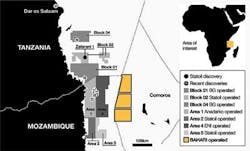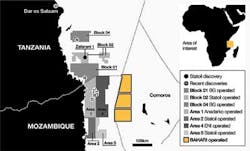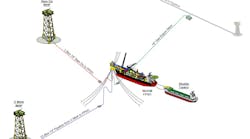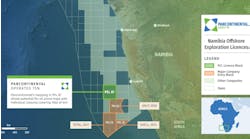The Comoros, Seychelles, Mauritius attract international interest
Dr. Luke Havemann
ENSafrica
In light of the recent discoveries that have been made offshoreEast Africa, the archipelagos of the Indian Ocean have received more attention from the international oil and gas industry. While the industry's interest is still somewhat nascent, there is a long road ahead before the hydrocarbon potential thereof can be wholly assessed. Aside from the geographical proximity to the famous plays of East Africa, the marine territory of each of the relevant archipelagos is truly substantial, a factor that adds to their allure, particularly since access-related issues that are renowned for complicating land-based exploration will not apply. There are many islands within the Indian Ocean but the three that are perhaps the most advanced in terms of the degree to which the governments have begun to focus on capturing the interest of international oil companies (IOCs) are the Comoros, Seychelles, and Mauritius. The following is a synopsis of the oil and gas activity in the waters of each of these island nations.
The Comoros
The Comoros gained independence from France in 1975. Since then the tiny nation of roughly 735,000 people has endured 20 coups and only as recently as 2006 did it experience its first peaceful transfer of political power. The Ibrahim Index for African Governance (IIAG), which provides an annual assessment of governance across the continent, ranked the Comoros 32nd out of Africa's 48 sub-Saharan countries. Additionally, Freedom House, a non-governmental organization involved in the advocacy of democracy and human rights, reported in its Freedom in the World 2014 survey that the Comoros is only "partly free" due to, amongst other things, weak rule of law and restrictions on political rights and civil liberties. In spite of these worrying trends, there has been an increase in the number of IOCs that have shown an interest in acquiring acreage within the Comoros and a concomitant rise in the introduction of industry-specific legislation.
In 2013, the Comorian government implemented a new petroleum code that is on a par with international standards and, soon thereafter, signed an exploration and production-sharing contract (PSC) with Kenyan-based Bahari Resources Ltd. and Discover Exploration Comoros BVC, a unit of London-based Discover Exploration Ltd. The license area, which includes blocks 35, 36, and 37, is on the western boundary of the Comoros and adjacent to Mozambique's Area 1 and Area 4 in the Rovuma Delta where Eni SpA and Anadarko Petroleum Corp. made their gas finds. Proximity to such gas-rich acreage is not the only interesting aspect of the PSC. The terms of the PSC include conducting a regional study of the entire Comorian territory, the results of which will be used to assist with the demarcation of additional blocks and the attraction of additional upstream-related investment.
Bahari and Discover are not the only IOCs that have taken an interest in Comorian acreage. Mauritius-based Safari Petroleum, in partnership with US-based Western Energy Production, has been authorized to explore three of the 40 demarcated blocks. Consequently, although the economist and author, Duncan Clarke, wrote in his book,Crude Continent: The Struggle for Africa's Oil Prize, that the "Comoros…is a lost archipelago in the oil game," it seems that the times are changing and Comoros may have found its way out of the wilderness, so to speak.
Displaying 1/2 Page 1,2Next>
View Article as Single page




